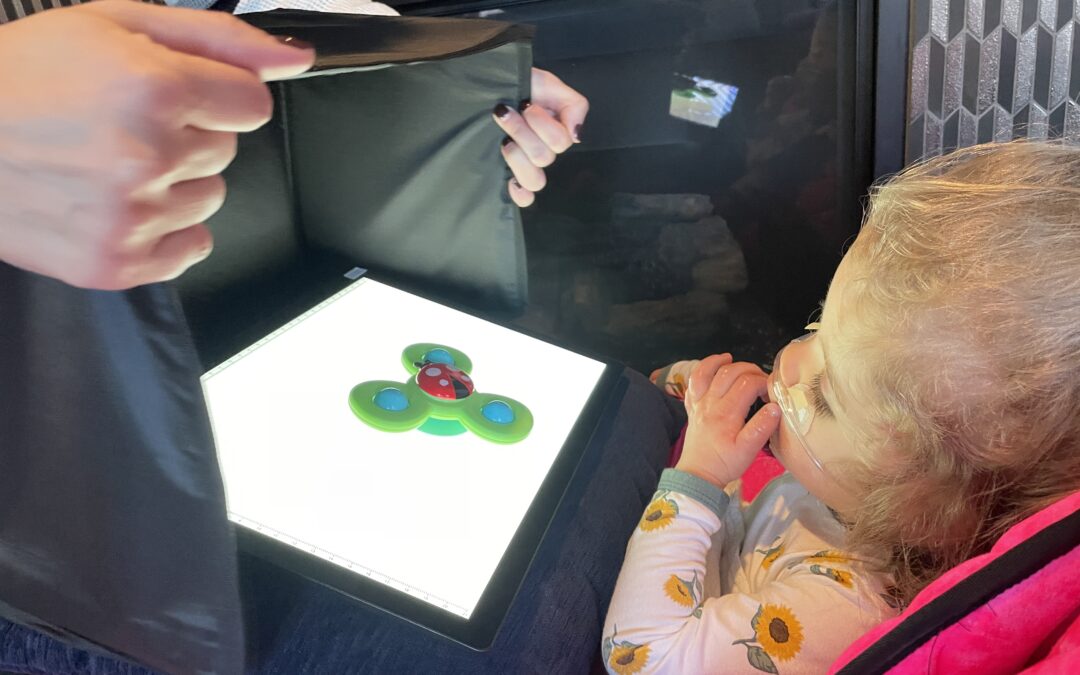Many kiddos with visual impairments struggle to use their available vision to observe or track toys. The objects may blend in with busy backgrounds or be dark in comparison to the surroundings. One of the strategies for helping young babies with visual impairment see toys better is to place them on a single-colored background. We often use a sheet, table cloth, or towel that is black or dark in color. This allows for the colorful toys to stand out and be more easily noticed and focused on by young children just learning to use their vision. Professionals working with young children with visual impairments may wear plain, dark, tops so that toys we hold out between us and the child stand out against the dark background.
We may also use a flashlight directed on a toy to help make the toy more easily seen to those with visual impairment. Similarly, it may be suggested for parents of kiddos with visual impairment to use light-up toys to help gain their attention. Toys with noise also allow kiddos to use their hearing to assist their vision in location or developing an interest in engaging with a toy.
As kiddos get older a TVI (teacher of students with visual impairments) may suggest using a lightbox, or light pad. This is a tool used to help toys or objects stand out and therefore be able to be seen more easily. Many people with visual impairment find that it is easier to see objects when they are placed on a light box. If you don’t have a light box, you might be able to create a dark surround and use the flashlight on your phone to help make an object more easily seen by someone with visual impairment.
As kiddos grow and learn to use their vision more, they can use the light box to enhance literacy skills. Teachers may print pictures from a book they are reading onto transparent film that can be placed on to the light box to encourage visual engagement. You can also put objects in clear plastic bottles that can sit on the light box while you work on associating the word with the object.

